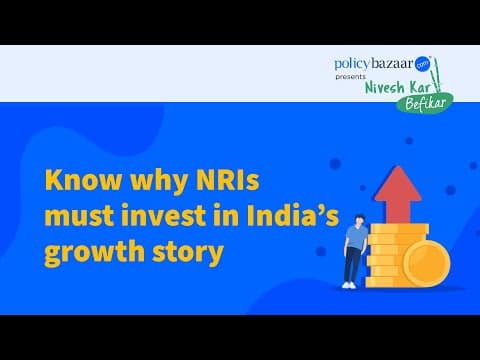1
Feeling Inadequately Insured? 3 Ways To Extend Your Health Insurance CoverDecoding Insurance
Annuity Plans: Best Retirement Bet for The Risk Averse
Retirement is one of the most crucial phases of life. To live a peaceful retirement life, you need a regular income to manage your household expenses. Given the current economic scenario in the backdrop of the ongoing public health crises globally, annuity plans have emerged as one of the safest and most secured investment products you can dip into for building a retirement income stream.
For the uninitiated, an annuity is a plan wherein a lump sum payment is paid by an individual to the insurer, to build a corpus that's available to them post-retirement through fixed payouts, which could be monthly, quarterly, half-yearly, or annually.
What makes annuity a stronger retirement planning bet is, it removes reinvestment risk that many other government pension schemes like the Post Office Monthly Income Scheme (POMIS) carry. Also, in government pension schemes such as POMIS and Senior Citizens Saving Scheme (SCSS), the maximum investment is capped. While POMIS carries an investment cap of Rs 4.5 lac, you cannot go beyond Rs 15 lac deposit in the SCSS.
Besides that, in government pension plans, like SCSS and Pradhan Mantri Vaya Vandana Yojana (PMVVY), an individual who is aged 60 years or above can only invest in the scheme whereas, in annuity plans, some plans provide entry after the age of 30.
TYPES OF ANNUITY PLANS
For starters, there are two types of annuity plans: immediate and deferred ones. In an immediate annuity, you pay a lump sum upfront, as it's usually bought by someone who is retiring soon and wants to receive a regular income on an immediate basis. And, as the name suggests, you can receive a pension as soon as you invest.
With deferred annuity plans, you can start at a younger age and start building a financial corpus from your savings over the years. The lump-sum created from your regular payments in deferred annuity plans makes way for fixed payout post-retirement. The advantage with a deferred annuity is you can build a sizable pension for yourself in comparison to an immediate annuity because you are putting money into the plan over time.
ANNUITY PLANS VS FIXED DEPOSITS
To compare annuity plans with a traditional investment instrument like a fixed deposit, here is how it stacks up against the latter. Interest rates for fixed deposits have consistently fallen in the last five years, from a high of 8.5% to 5.4% right now. In a scenario where FD rates are declining, annuity plans have definitely a big edge over them, be it in terms of providing higher returns post-tax, or offering long-term retirement planning ability.
To illustrate an example, for a 55 years old rate of return on HDFC Life New Immediate Annuity Plan, the rate of return is 6.44% and for 60 years old, it is 6.41%. So, the rate of return for annuity plans is relatively higher than FD. You definitely don't want a lower rate of return on your life-savings.
Moreover, the duration of FD is a maximum of 10 years, unlike annuity plans in which you get the pension for lifelong. When you put money in an FD, the rate of interest is guaranteed. However, there is no guarantee that the rate of interest will be the same the next time you want to put money in a Fixed Deposit. This is reinvestment risk which is the risk of earning different returns on an investment when you had initially invested for a return different from the new rate. In an FD, you will have to invest at a new rate every 10 years.
IMMEDIATE ANNUITY PLANS OPTIONS
Under immediate annuity, there are many options to choose from based on your financial needs. These options need to be selected in the proposal form when buying an annuity plan. It may be noted that you can’t change these options at a later stage after the policy is issued.
SINGLE LIFE ANNUITY: It means the individual who opts for the annuity will get a life long pension. There are many options to choose from under Single Life annuity. These are:
Life Annuity: This option pays annuity for life to the annuitant and annuity payments will cease on the death of the annuitant.
Life Annuity with Return of Purchase Price: This option pays you an annuity for life and on death, the purchase price is returned to your nominee. Customers who generally opt for this option want to leave a legacy behind for their spouse or children. In India, Life Annuity with Return of Purchase option is the most popular among customers.
While the Life annuity option gives a somewhat higher rate (approximately 1% more) than Life annuity with Return of Purchase Price option but no corpus is returned on death. If you feel that the annuity income is not sufficient in the return of the price option, then you should go for the Life Annuity option. It is suitable for those who maintain an active lifestyle and feel that they would live longer. It is also suitable for those customers who have other alternatives for leaving a legacy behind for their children.
Similarly, there are options like Life Annuity with a Guarantee Period, Life Annuity with 5% escalation, Life Annuity with Return of Purchase Price in Parts, Life Annuity with Return of Purchase Price on Diagnosis of Critical Illness, etc.
JOINT LIFE ANNUITY: Joint Life Annuity options are those where the second life can be your spouse, children, parents, parents-in-law, or siblings who will receive annuity after your lifetime. In Joint Life annuity, there are many annuity options available to choose from like 100% annuity can be given to the secondary annuitant, Joint Life Annuity with 50% annuity to the secondary annuitant, etc.
To compare single-life annuity with joint-life annuity, the former suits those who do not have a dependent while whole joint-life annuity should be chosen by those whose family members will be dependent on their income. A single-life annuity usually pays a higher level of income than a joint-life annuity. That is because it does not provide your spouse with an income in the case of your demise.
SHOULD YOU INVEST IN ANNUITIES?
If you are a risk-averse person, then annuities are one of the best retirement planning tool. It provides a secured income stream, however you should be aware that access to annuities capital doesn't exist, in case of an emergency situation. You cannot break the contract, unlike in the case of an FD or other traditional government instruments, where partial or full withdrawals are available.
Yet, the biggest advantage of annuities is your money is locked in for providing that comfortable lifestyle, which everyone desires once you retire. In fact, you are leaving behind a legacy for your family, if you are choosing a return the price option. Go for it, if you like to keep your money, right where it doesn't fluctuate, but only steadily grows, and steadily gives you back!














